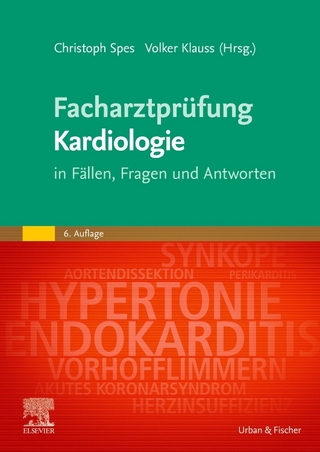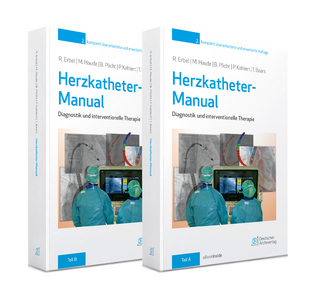
Nitrates Updated
Current Use in Angina, Ischemia, Infarction and Failure
Seiten
1997
|
1997 ed.
Springer (Verlag)
978-0-7923-3466-8 (ISBN)
Springer (Verlag)
978-0-7923-3466-8 (ISBN)
Nitrates remain among the most commonly used therapeutic agents in cardiology. Thus, our understanding of nitrate tolerance has been taken further by the advent of new nitrate preparations and by studies at a basic science level. The chief limitation to the use of nitrates lies in nitrate tolerance.
Nitrates remain among the most commonly used therapeutic agents in cardiology. That they can re lieve pain in angina pectoris has been known at least since 1867, when Lauder Brunton described their clinical use. Now, almost 130 years later, we are constantly learning more about their optimal use in anginal syndromes. For example, there is no doubt that nitrate tolerance occurs, but equally no doubt that certain drug dosages help to attenuate such toler ance. Thus, our understanding of nitrate tolerance has been taken further by the advent of new nitrate preparations and by studies at a basic science level. The current intense interest in nitrates has been rekindled by the growing emphasis on the role of the endothelium in the production of nitric oxide, a basic cardiovascular regulator. If nitric oxide is vasodilator and protects the vascular endothelium, then nitrates should also have similar properties. Hence this book starts off with the role of the endothelium and ni trates in vasodilation. Next, the mechanisms of ac tion of nitrates are considered with emphasis on the role of cyclic GMP. The chief limitation to the use of nitrates lies in nitrate tolerance. After carefully looking at all the evidence, the authors of the third chapter conclude that the mechanism is likely to be multifactorial. The mechanism responsible for the tolerance still remains unknown. In vitro tolerance may be due to enhanced production of vascular superoxide [1].
Nitrates remain among the most commonly used therapeutic agents in cardiology. That they can re lieve pain in angina pectoris has been known at least since 1867, when Lauder Brunton described their clinical use. Now, almost 130 years later, we are constantly learning more about their optimal use in anginal syndromes. For example, there is no doubt that nitrate tolerance occurs, but equally no doubt that certain drug dosages help to attenuate such toler ance. Thus, our understanding of nitrate tolerance has been taken further by the advent of new nitrate preparations and by studies at a basic science level. The current intense interest in nitrates has been rekindled by the growing emphasis on the role of the endothelium in the production of nitric oxide, a basic cardiovascular regulator. If nitric oxide is vasodilator and protects the vascular endothelium, then nitrates should also have similar properties. Hence this book starts off with the role of the endothelium and ni trates in vasodilation. Next, the mechanisms of ac tion of nitrates are considered with emphasis on the role of cyclic GMP. The chief limitation to the use of nitrates lies in nitrate tolerance. After carefully looking at all the evidence, the authors of the third chapter conclude that the mechanism is likely to be multifactorial. The mechanism responsible for the tolerance still remains unknown. In vitro tolerance may be due to enhanced production of vascular superoxide [1].
Coronary Vasomotor Responses: Role of Endothelium and Nitrovasodilators.- Mechanisms of Action Nitrates.- Mechanisms of Nitrate Tolerance.- Clinical Pharmacokinetics of Nitrates.- Short and Long-Acting Oral Nitrates for Stable Angina Pectoris.- Ointments and Transdermal Nitroglycerin Patches for Stable Angina Pectoris.- Nitrates for Unstable Angina.- Nitrates in Myocardial Infarction.- Nitrates in Silent Ischemia.- Nitrates in Congestive Heart Failure.- The Organic Nitrates: Practical Problems in Their Use.
| Erscheint lt. Verlag | 31.1.1997 |
|---|---|
| Zusatzinfo | X, 226 p. |
| Verlagsort | Dordrecht |
| Sprache | englisch |
| Maße | 155 x 235 mm |
| Themenwelt | Medizinische Fachgebiete ► Innere Medizin ► Kardiologie / Angiologie |
| ISBN-10 | 0-7923-3466-3 / 0792334663 |
| ISBN-13 | 978-0-7923-3466-8 / 9780792334668 |
| Zustand | Neuware |
| Haben Sie eine Frage zum Produkt? |
Mehr entdecken
aus dem Bereich
aus dem Bereich
in Fällen, Fragen und Antworten
Buch | Softcover (2024)
Urban & Fischer in Elsevier (Verlag)
89,00 €
Diagnostik und interventionelle Therapie | 2 Bände
Buch (2024)
Deutscher Ärzteverlag
349,99 €


